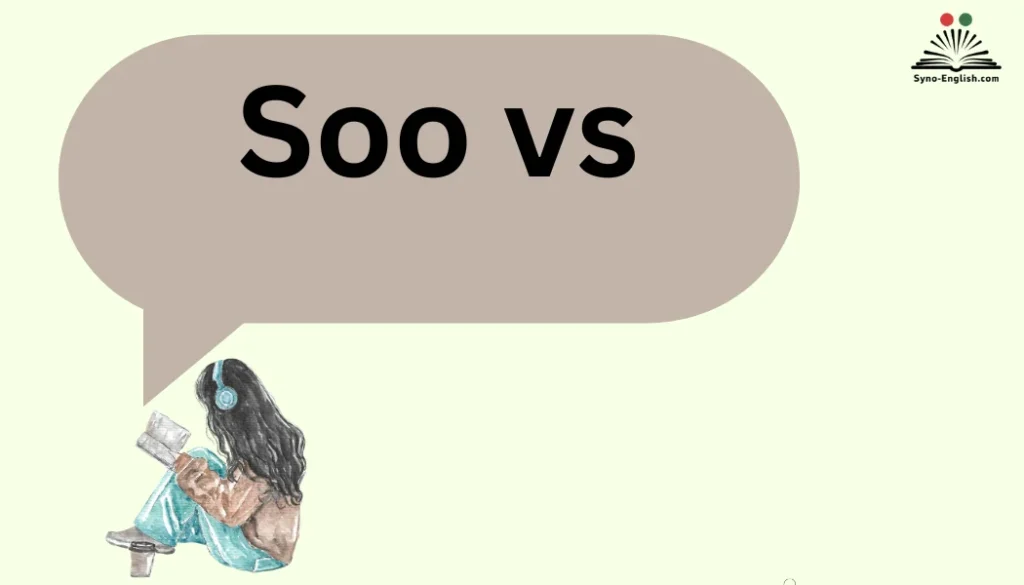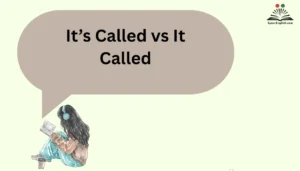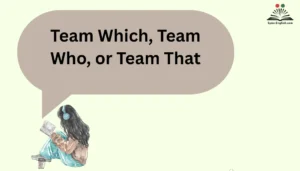Language naturally evolves every day, and this change is most obvious in online conversations. When people are writing on social media or sending text messages, they often use creative forms of words. I’ve noticed how many of my friends type soo instead of so.
At first, it looks like a typo, but it’s actually a playful extension of the standard form. It gives extra emotion or emphasis, like saying something feels “sooo good.” That little change reflects how informal spaces allow English to function in new ways.In my experience teaching grammar, I’ve seen that students sometimes wonder if soo is a legitimateword. The difference between soo vs. so lies in how each fits into different contexts.
We usesoo when we want to exaggerate feelings, while so fits more proper, formal situations. This pattern explores how emotions and tone shift between informal and formalsettings. Online, people express themselves differently, and that’s what makes digital communication so dynamic
to “Soo” and “So” in Daily Communication
Language mirrors the way we interact. In casual speech, people often stretch out words for emphasis: “That movie was soooo good.” When transferred into writing, that extra length shows up as “soo” or “sooo.”
On the other hand, “so” is one of the most versatile words in English. It’s everywhere—used to connect sentences, intensify adjectives, or show cause and effect.
Why the confusion happens:
- “So” is the correct spelling in formal English.
- “Soo” looks like slang but has gained popularity online, especially in chatrooms, texting, and memes.
- People use “soo” as an informal intensifier, closer to spoken language.
Think of it this way: “so” is the official entry in every dictionary, while “soo” lives in the wild west of internet culture.
The Standard Role of “So” in English
“So” holds a special place in grammar because of its flexibility. It can function as different parts of speech depending on context.
Functions of “So”:
- Conjunction: connects clauses
- Adverb: modifies adjectives or verbs
- Intensifier: boosts emotional tone
Here’s a table to break it down:
| Function | Example Sentence | Purpose |
| Conjunction | “I was tired, so I went home.” | Shows cause and effect |
| Adverb | “She speaks so quickly.” | Describes how something is done |
| Intensifier | “That cake is so delicious.” | Adds emphasis |
| Discourse Marker | “So, what do you think?” | Signals a shift or continuation in talk |
Notice how “so” adapts seamlessly depending on context. This adaptability makes it indispensable in both spoken and written English.
Understanding “So” in Various Contexts
The meaning of “so” changes with context. Let’s examine how it works in real communication:
As a Conjunction
“So” often signals cause-and-effect relationships.
- “It started raining, so we stayed inside.”
- “She didn’t study, so she failed the exam.”
As an Intensifier
“So” amplifies emotions and qualities.
- “That’s so funny.”
- “I’m so tired.”
As a Discourse Marker
In conversations, “so” works as a transition.
- “So, what’s next?”
- “So, as I was saying…”
In Literature and Media
Writers and speakers frequently rely on “so” to make dialogue sound natural. For instance, in TV shows, characters often begin lines with “So…” to reflect real-life speech patterns.
Common Usage Examples of “So”
You’ll encounter “so” in almost every setting. Below are common categories where “so” appears:
- Everyday conversations
- “I was so late today.”
- “So, are we going out tonight?”
- Academic writing
- “The results were significant, so further testing is required.”
- Storytelling
- “So there was this one time when…”
- Marketing language
- “This product is so effective, you’ll never switch brands again.”
The ability of “so” to fit seamlessly across contexts is why it’s one of the most frequently used words in English.
Exploring the Informal Use of “Soo” in Modern Language
Now let’s turn to “soo.” Unlike “so,” it doesn’t have official recognition in dictionaries. Instead, it thrives in informal writing.
People use “soo” to:
- Mimic spoken emphasis (“I’m soo excited!”)
- Convey emotion online (“That’s soo funny 😂”)
- Add personality to text messages or posts
A case study from Twitter and Reddit shows that “soo” often appears when people express excitement, sarcasm, or exaggeration.
Examples in Modern Writing:
- Texting: “That show was soo boring.”
- Memes: “I’m soo done with this.”
- Social media captions: “Soo in love with this dress.”
Essentially, “soo” = informal emphasis while “so” = standard grammar.
Clarity on “Is ‘Soo’ a Real Word?”
Technically, “soo” is not a standard word in English. It doesn’t appear in major dictionaries like Merriam-Webster, Oxford English Dictionary, or Cambridge.
However, it’s widely recognized in informal settings. Language isn’t just about rules—it’s also about usage. If enough people use a form, it gains cultural recognition even if not officially codified.
Linguists call this orthographic stretching—deliberately extending a word’s spelling to show emphasis. Similar examples include:
- “yesss” for excitement
- “nooo” for frustration
- “heyyy” for friendliness
The Dictionary Verdict on “Soo”
- Oxford English Dictionary: No entry for “soo” (except as a surname or place name)
- Merriam-Webster: No standard listing
- Cambridge Dictionary: Lists only “so” as the correct form
But dictionaries acknowledge the phenomenon of extended spelling in informal English. It’s not “wrong” in casual settings—it’s just non-standard.
Instances Where “Soo” Appears in Writing
Despite lacking formal recognition, “soo” shows up regularly in digital communication.
Where you’ll see it:
- Social media: TikTok captions, Instagram stories, Twitter memes
- Text messaging: Friends emphasize feelings with “soo”
- Informal blogs: Writers use it to appear conversational
- Marketing campaigns: Some brands use “soo” for a playful voice
Example:
- Brand tweet: “We’re soo ready for the weekend.”
This playful spelling helps companies connect with younger audiences.
The Right Contexts to Use “So” Over “Soo”
If you’re writing for professional, academic, or formal purposes, stick with “so.” Using “soo” would look careless or unprofessional.
Use “soo” only when:
- Texting friends
- Writing humor or memes
- Adding flair to casual online posts
Here’s a quick reference table:
| Situation | Recommended Form | Example Usage |
| Academic essay | So | “The study was conclusive, so the theory holds.” |
| Business email | So | “We’re so pleased with your progress.” |
| Texting a friend | Soo | “I’m soo tired after today.” |
| Social media post | Soo | “This concert was soo amazing!” |
| Marketing campaign | Either (depends) | “Soo good, you’ll want more.” |
The Prevalence of “So” vs. “Soo” in Formal and Informal Settings
Frequency of usage differs dramatically between formal and informal environments.
Formal writing:
- “So” appears in nearly every type of academic or professional context.
- Example: Research papers, news articles, business reports.
Informal writing:
- “Soo” dominates in texting and social platforms.
- Example: Twitter hashtags like #sooexcited.
Interesting fact: According to a 2023 linguistic survey, “soo” appeared in over 2.1 million Twitter posts worldwide, mostly from users under 30
Conclusion
Language is not fixed—it’s alive, breathing, and constantly evolving with human emotion and creativity. The trend of using soo vs. so beautifully illustrates how expression adapts in the digital age. What once appeared as a typo is now a playful tool that adds tone, warmth, and individuality to online communication. Whether in social media, text messages, or casual conversations, people use words like “soo” to emphasize emotion and personality, bridging the gap between written and spoken feelings. This subtle difference shows how people naturally stretch language to express themselves better.
Moreover, the evolution of language reflects how technology shapes communication habits. Every message, post, and comment influences how we connect and relate to each other. English has always been flexible, but online culture has accelerated its transformation, allowing words to carry rhythm, attitude, and emotion. The debate of soo vs. so is not about correctness—it’s about context and connection. Both forms have their place, whether in formal or informal settings. As long as the meaning is clear, language continues to serve its ultimate purpose: communication that feels real, human, and expressive.
FAQs
What does “soo” mean?
“Soo” is an informal, playful version of “so” used to express stronger emotion or emphasis, often seen in online messages.
Is “soo” a real word in English?
Technically, “soo” isn’t standard English, but it’s widely accepted in informal writing like social media or texting.
Why do people write “soo” instead of “so”?
People use “soo” to add tone, exaggeration, or emotion that plain “so” doesn’t fully capture.
Is it okay to use “soo” in formal writing?
No, “soo” should only be used in informal or friendly contexts; “so” fits better in professional writing.
Does “soo” change the meaning of a sentence?
Not really—it only changes the tone or feeling, making the sentence sound more expressive.
When did people start using “soo”?
It became popular with texting and social media culture in the early 2000s as digital communication grew.
Can “soo” be used in spoken English?
Yes, people sometimes say it playfully in casual speech to emphasize something, like “That’s sooo funny!”
Is using “soo” grammatically wrong?
Grammatically, yes—but linguistically, it’s understood as creative emphasis rather than a mistake.
What’s the difference between “soo” and “so”?
“So” is standard and formal; “soo” is informal, emotional, and used for exaggeration in casual writing.
Why does language change like this?
Language evolves because people adapt it to express feelings, creativity, and individuality in new social environments.

Emma Brooke is a passionate English educator, writer, and language enthusiast with over a decade of experience helping learners master the nuances of the English language. At SynoEnglish, she blends practical grammar advice with real-world communication tips to make English easier, clearer, and more enjoyable for readers of all levels.



